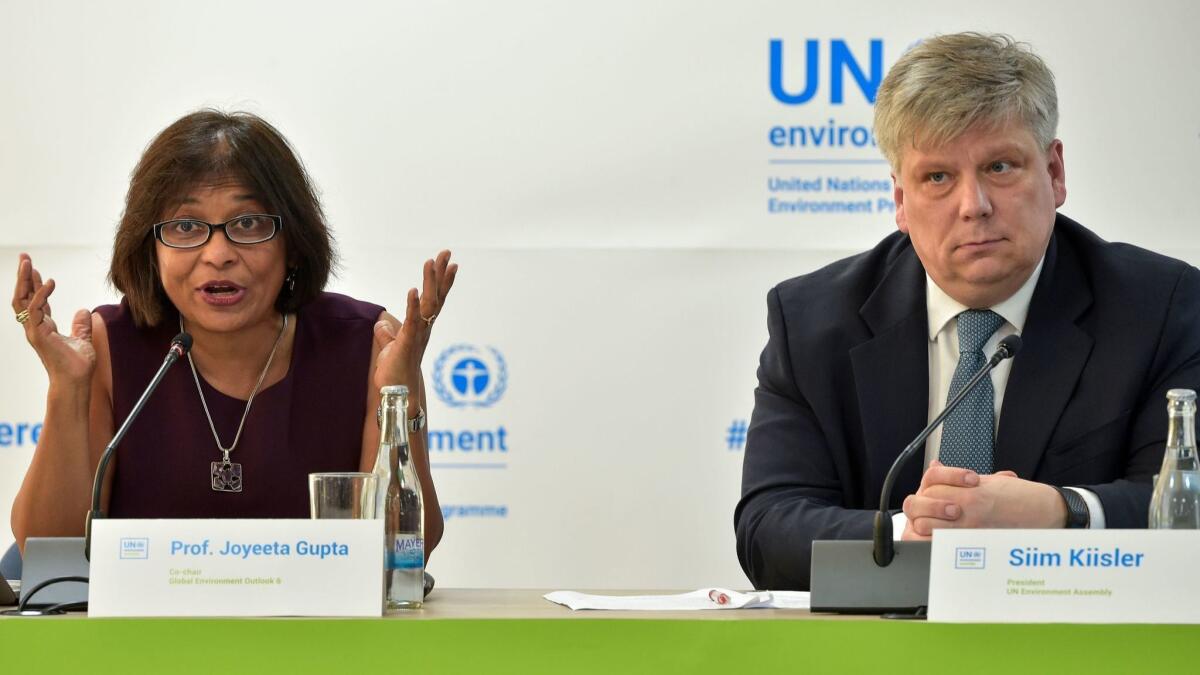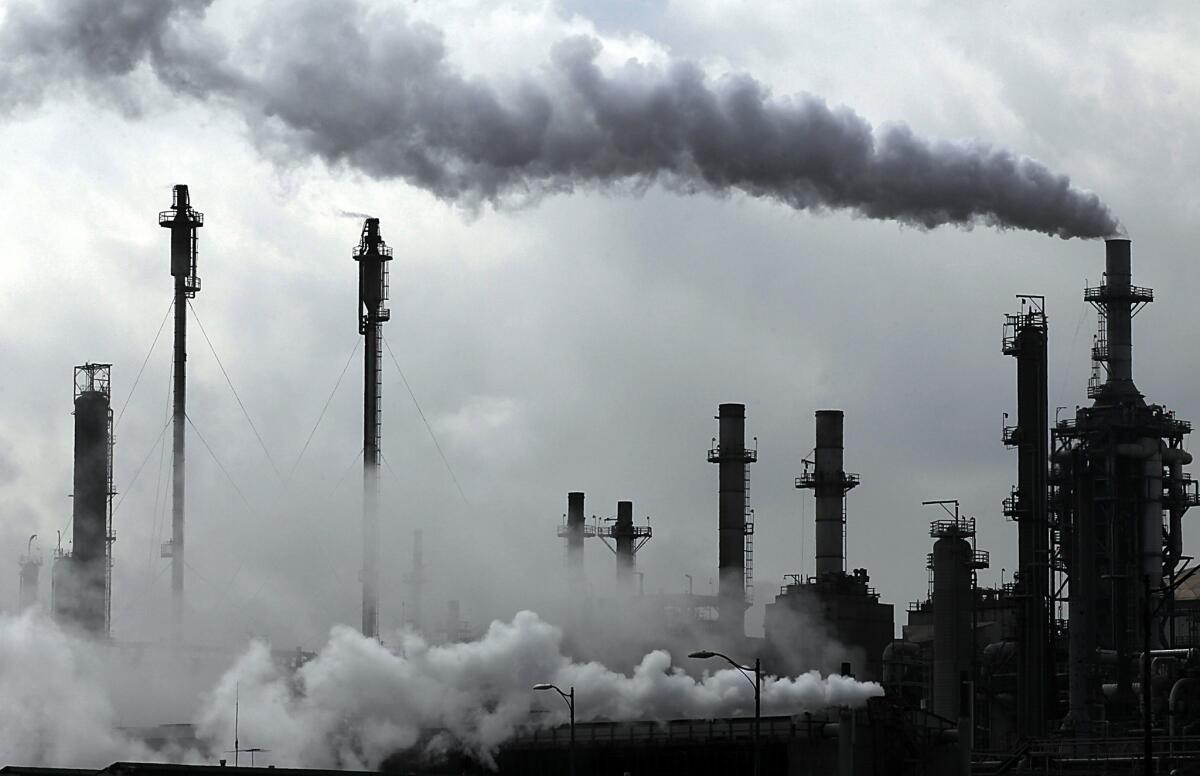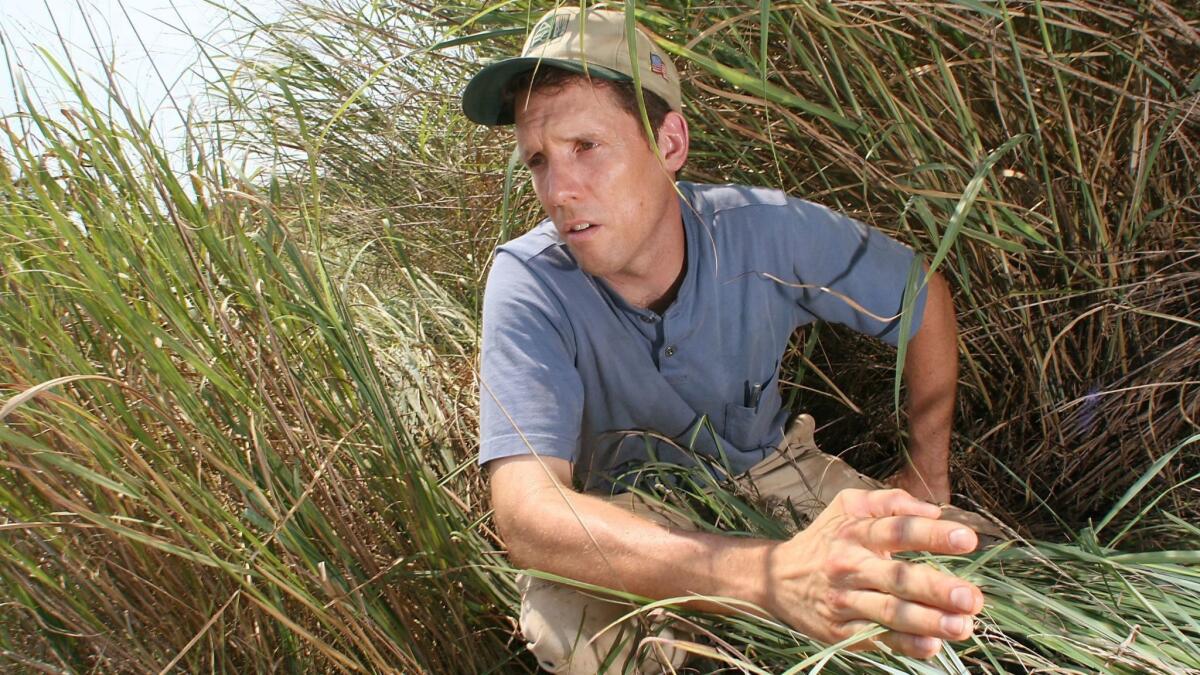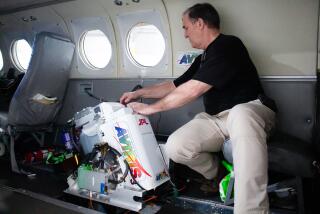The real climate change controversy: Whether to engineer the planet in order to fix it
In 1965, leading scientists of the day produced a report for President Lyndon B. Johnson on the rampant pollution of the environment. It included a section that summed up their understanding of climate change.
“Through his worldwide industrial civilization, Man is unwittingly conducting a vast geophysical experiment,” wrote longtime UC San Diego oceanographer Roger Revelle. “The climatic changes that may be produced,” he warned, “could be deleterious from the point of view of human beings.”
What Revelle suggested next kicked off a debate that continues to this day: Can humans avert the worst effects of climate change with a vast geoengineering experiment?
Revelle thought so. One solution, he proposed, would be to reflect more of the sun’s energy away from the Earth “by spreading very small reflecting particles” over large swaths of the ocean.
Over the intervening decades, the idea of geoengineering Earth’s climate has only grown more controversial.
Most climate experts agree that the best way to keep global temperatures in check is to rapidly reduce emissions of carbon dioxide and other greenhouse gases by transitioning to clean energy sources. But scientists and policymakers are deeply divided over which forms of geoengineering also deserve serious consideration — and when the world might want to use them.
The United Nations Environment Assembly recently shelved a resolution to commission a report on the subject, because even studying it is contentious. (The U.S. helped block the proposal.)

Many questions revolve around scientific uncertainties and economic arguments. But the debate also taps into thorny philosophical questions:
Is intentionally altering the climate a defensible last-ditch effort to stave off climate damages — or a dangerous act of hubris?
And do we betray future generations by contemplating such drastic measures, or by failing to pursue them?
::
The origins of geoengineering lie in 19th century efforts to combat drought by conjuring rain, and later attempts by the U.S. military to engage in “climatological warfare.”
These mostly consisted of Cold War thought experiments. But during the Vietnam War, the Air Force dropped nearly 50,000 silver iodide flares over southeast Asia in a cloud-seeding offensive designed to flood the Ho Chi Minh Trail.
The move helped prompt the UN to adopt the Convention on the Prohibition of Military or Any Other Hostile Use of Environmental Modification Techniques in 1978 and soured the U.S. government on funding research into climate modification, according to historian James Fleming at Colby College.
But interest in geoengineering has reemerged as the world continues to emit more greenhouse gases.

Research suggests that it may already be too late to meet the goals of the Paris climate accord — limiting warming to less than 2 degrees Celsius above pre-industrial temperatures — solely by cutting emissions.
There are various approaches that could help, each with its own risks and benefits, and they fall into two distinct categories: removing carbon dioxide from the atmosphere and reducing how much energy the Earth absorbs from the sun.
Of the two, removing CO2 is far less controversial, and most scientists have accepted that it will be necessary to zero out greenhouse gas emissions.
Few people object to strategies such as planting forests and managing land to maximize the carbon stored in soils. But other proposals — including growing biofuel crops for energy, capturing the CO2 when they are burned, and storing it underground — have raised more red flags. Though the plants pull CO2 out of the air as they grow, they also use up precious land and water that may be needed to grow food.

Another option is to remove CO2 directly from the atmosphere by drawing air through great fans and absorbing the carbon on filters, or through chemical reactions with hydroxide solutions. A company in Canada has started testing “direct air capture” at a pilot plant, and another in Switzerland opened for business in 2017.
However, the cost and scalability of carbon-removal technologies is still unclear, and many researchers say we’d be gambling with the future if we bank on them too much.
If, for whatever reason, they don’t deliver, “we can’t go back and say, ’Oh, I guess we should have cut more,’” said Duke University climate scientist Drew Shindell. “It’s too late.”
::
If carbon removal has inched into the mainstream, the idea of tinkering with sunlight remains a pariah. Some fear the mere prospect of a techno-fix would sap the world of the motivation to act.
But the longer the world waits to cut emissions, the more future generations may have to consider other options, said Sikina Jinnah, who studies global environmental politics at UC Santa Cruz. “It’s time to start thinking about some of these more fringe ideas.”
The one that has attracted the most attention involves injecting microscopic sulfate aerosols into the stratosphere, where they would spread around the planet over the course of a few weeks and reflect sunlight before it hits the ground.

Scientists know from studying volcanic eruptions — which do the same thing — that this can cool the planet, though new injections would be required every few years.
Engineers have also started designing special vessels for spraying sea salt into the air to make marine clouds brighter and more reflective. Others have suggested whitening the oceans, as Revelle proposed, or stationing mirrors in orbit.
Though carbon removal addresses the source of the climate problem — the amount of greenhouse gases in the atmosphere — these strategies for solar radiation management only mask some of the symptoms. SRM would offset warming, which could help stabilize glaciers and keep species from going extinct. But it doesn’t prevent CO2 from acidifying the oceans or curtail the pollution from burning fossil fuels, Shindell said.
“This can’t replace emissions cuts,” said Peter Irvine, a climate scientist at Harvard University. “But it might help to reduce risks.”
There are still many scientific uncertainties around SRM. Computer models indicate that reflecting too much sunlight has the potential to disrupt global rainfall patterns, especially in countries that have not contributed much to climate change and are already most vulnerable to its effects. (Irvine’s latest research suggests a more restrained approach would benefit most people.)
More answers may come soon. The U.S. National Academies of Sciences, Engineering, and Medicine is launching a study to guide future research into SRM. And the Intergovernmental Panel on Climate Change will consider the subject in its next assessment report, to be released in 2021.
But the public remains squeamish about real-world tests. A 2011 experiment by British researchers, which would have used a weather balloon to release a bathtub’s worth of water into the lower atmosphere, was canceled in part because the project faced a strong backlash.
Researchers at Harvard now hope to try a similar experiment over New Mexico. The launch, which researchers hoped could take place as soon as early 2019, is on hold as they try devise a responsible way to proceed into controversial but virtually unregulated territory.
::
Climate affects everyone, and that makes geoengineering a tricky prospect. Who gets to decide when and how it’s done?
One country — even one company — could unilaterally alter the planet with a single round of aerosol injections. All they’d need is a fleet of planes and a few billion dollars.
Imagine a nation that’s hit by drought or famine as a result of global warming and sees SRM as a possible solution, said Ken Caldeira, a climate scientist at the Carnegie Institution for Science. “I think a politician from such a country would be hard-pressed to explain why they’re not doing it.”
Given that everyone would be affected, it may be impossible to make a decision about SRM in a truly just and democratic way, said Christopher Preston, an environmental philosopher at the University of Montana.
Future generations will have to live with the decision too. Once humans start injecting aerosols into the atmosphere, they can’t stop until greenhouse gases have stabilized at target levels. If they quit while CO2 concentrations are still too high, they’ll be hit all at once with the warming SRM was covering up.
Whether it seems wise to consider such technologies depends in part on whether you believe the world will act fast to cut emissions — and if you don’t, whether you see geoengineering and its possible consequences as a lesser evil than unabated climate suffering.
It also depends on whether you think we should dare meddle with Earth’s climate in such a fundamental and unprecedented way.
The idea is “incredibly scary,” said Jinnah, even for people like her who study SRM. “It kind of cuts to the heart of who we are on this planet and what our role is as human beings.”
Of course, we already have changed Earth’s climate. That was an accident — in the beginning, at least.
But for some, it makes all the difference in the world.







